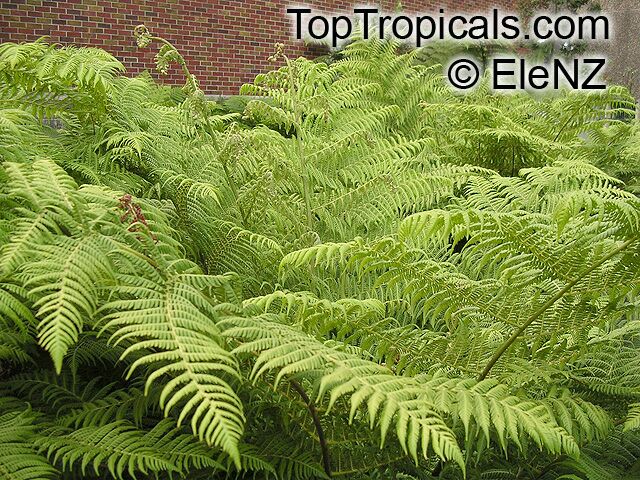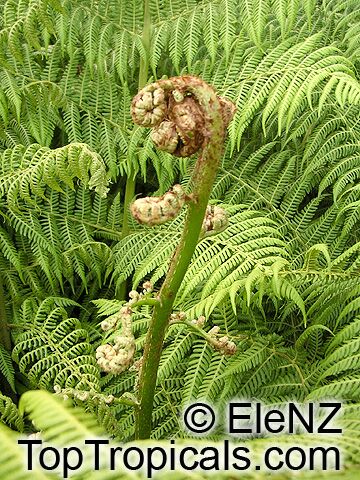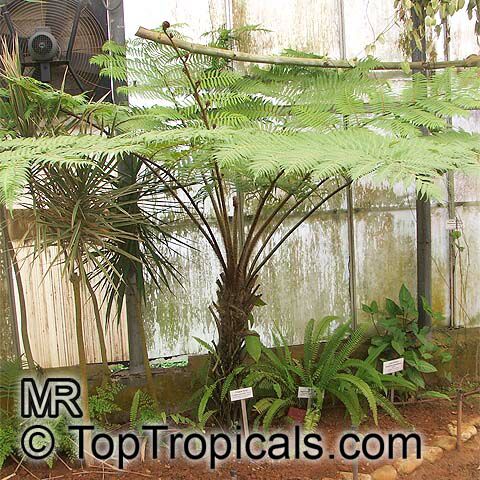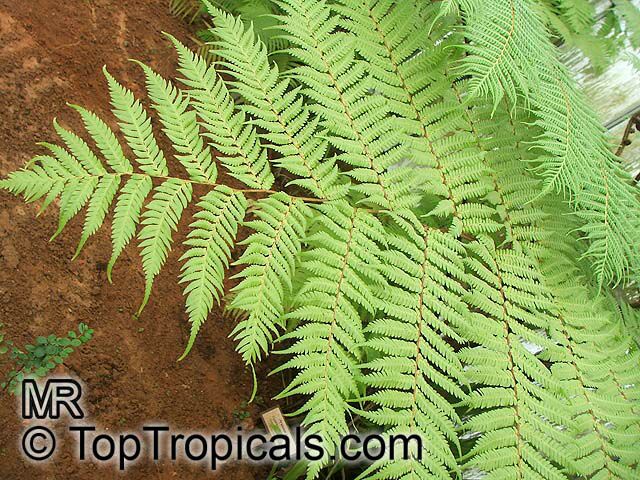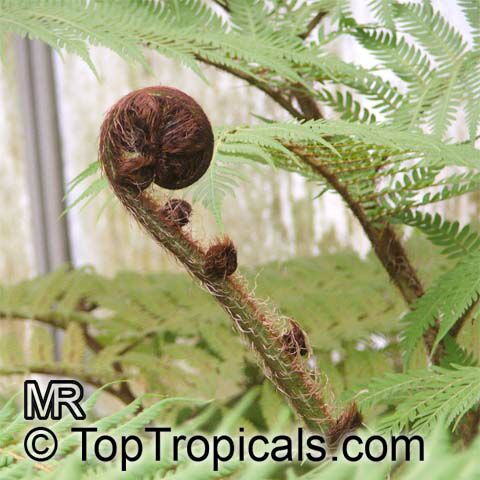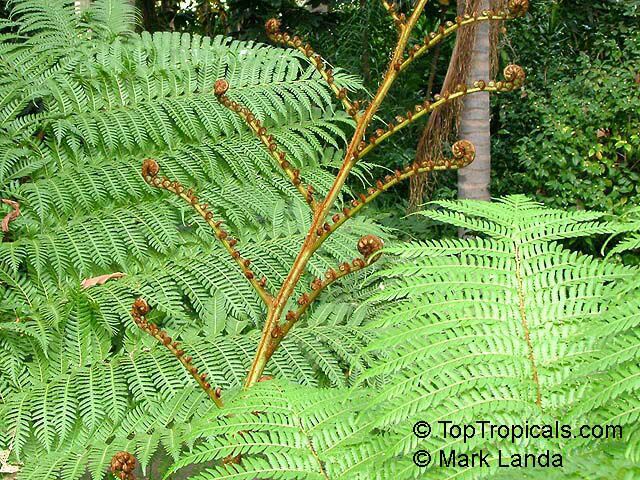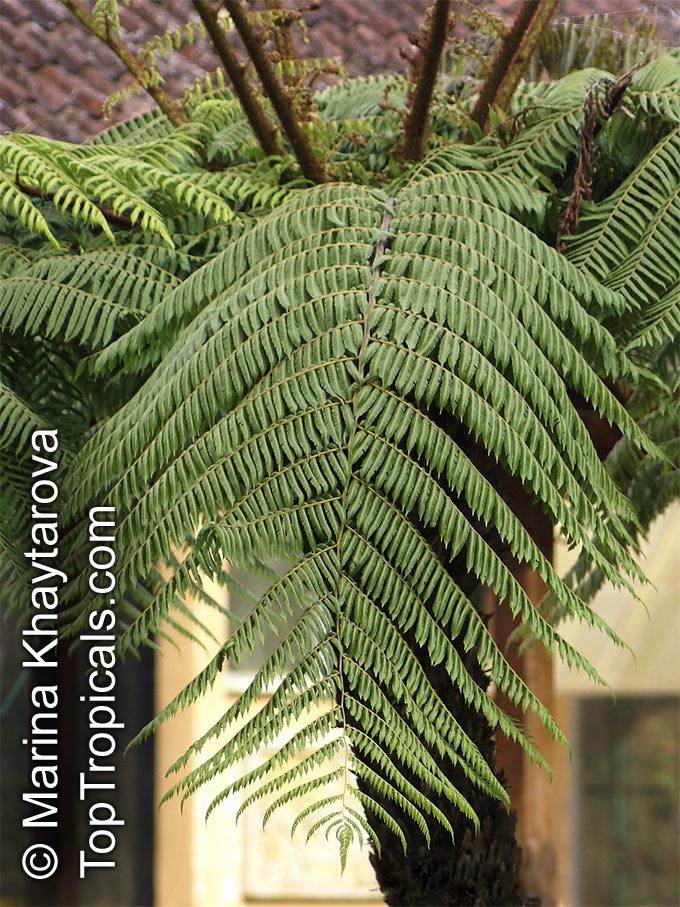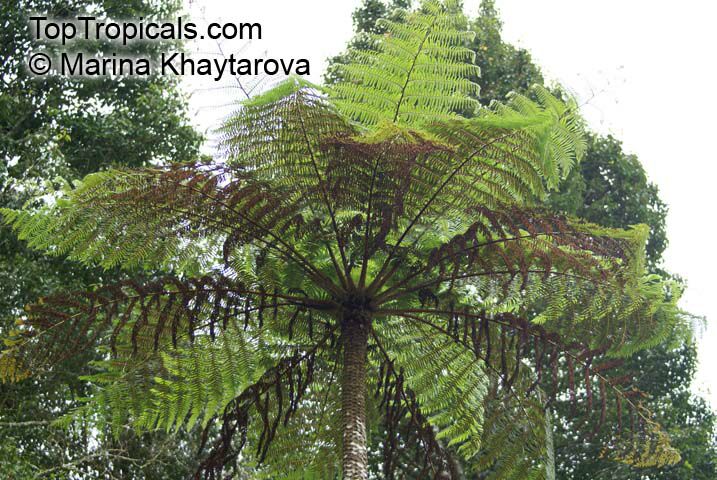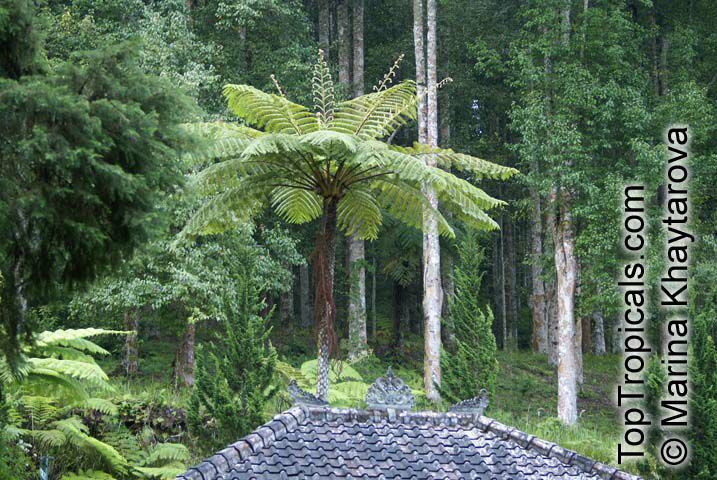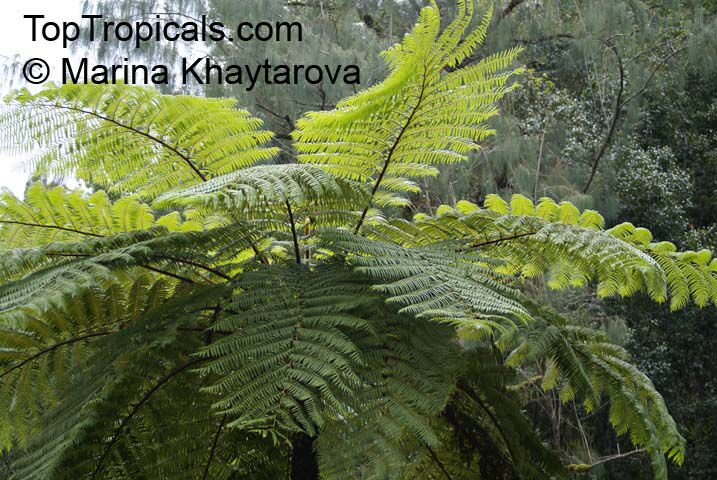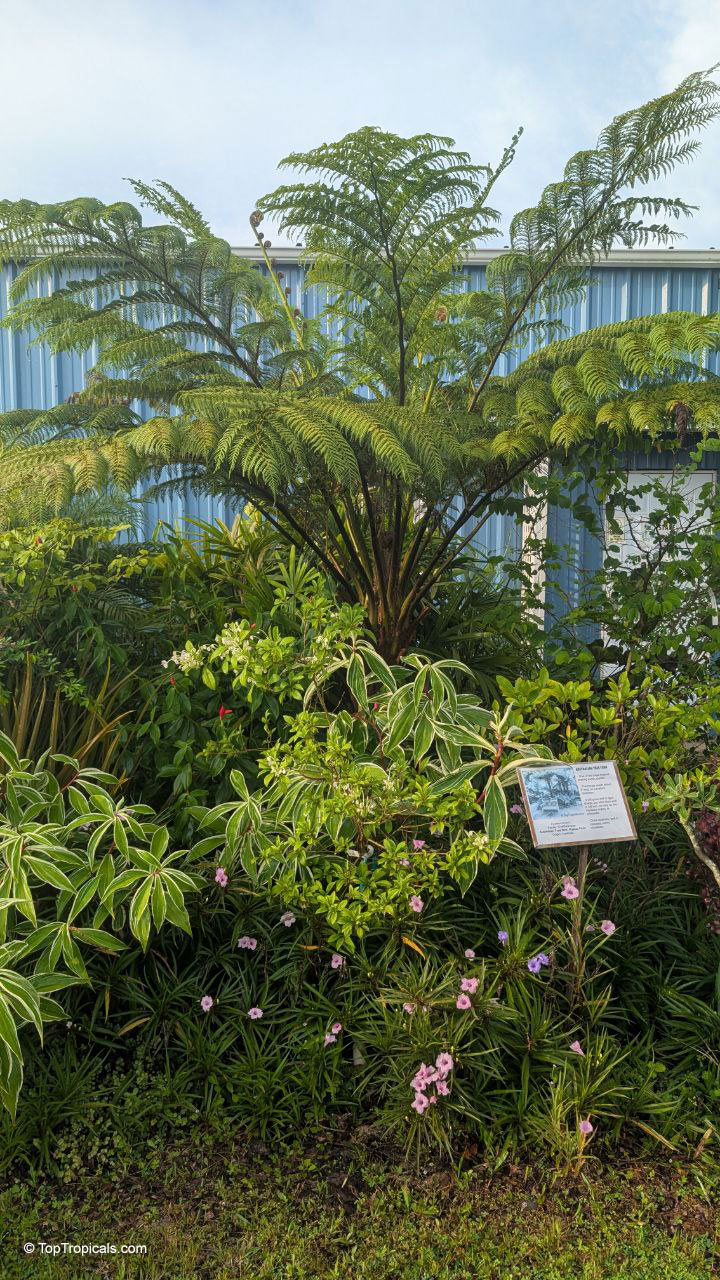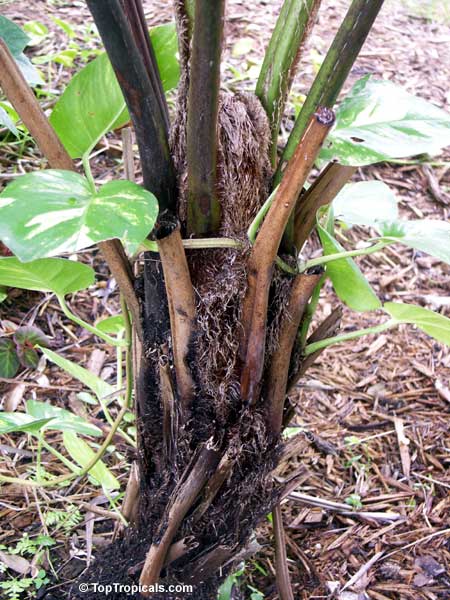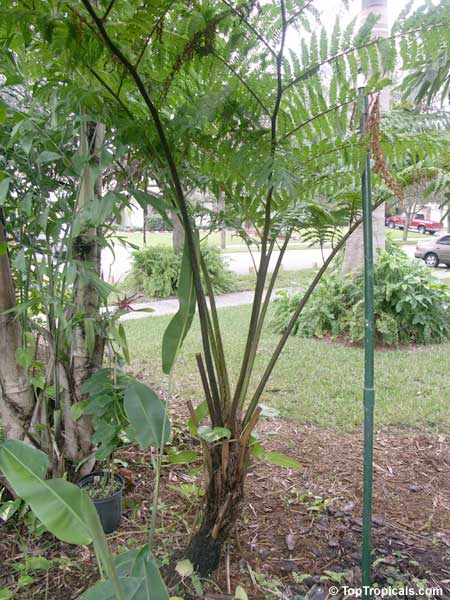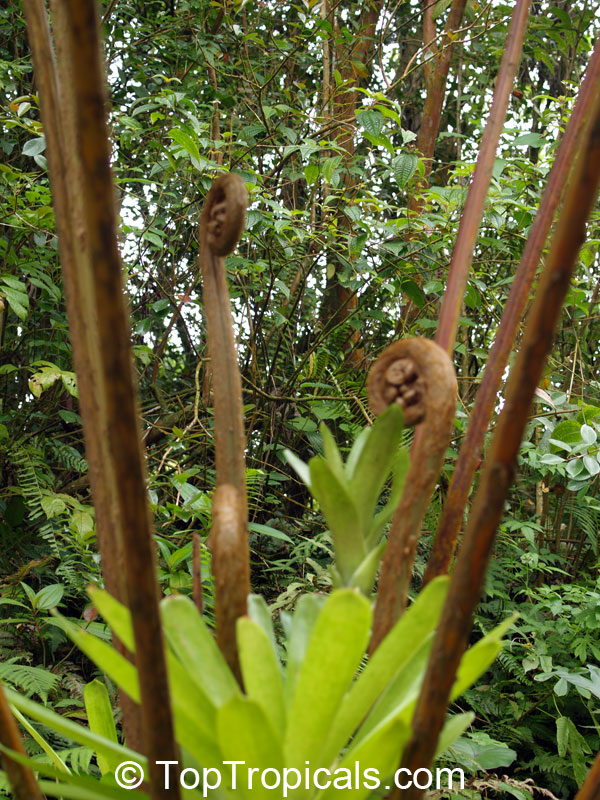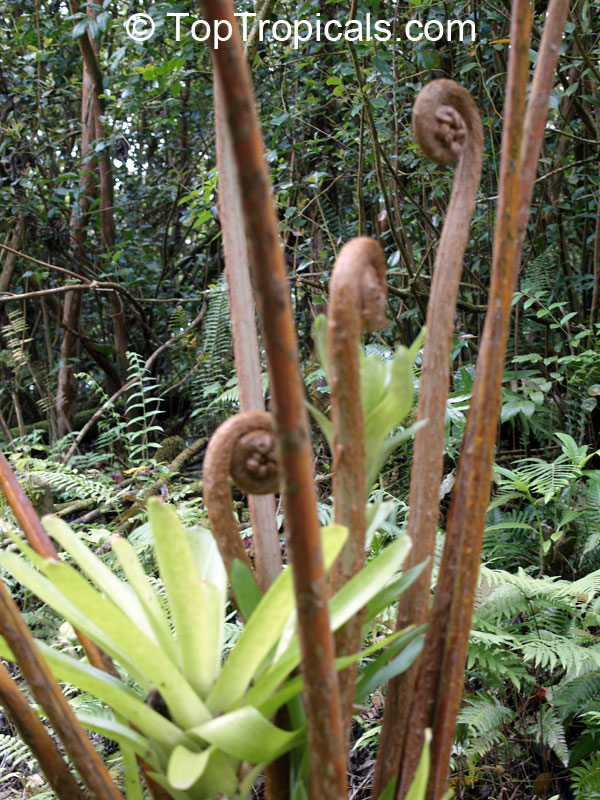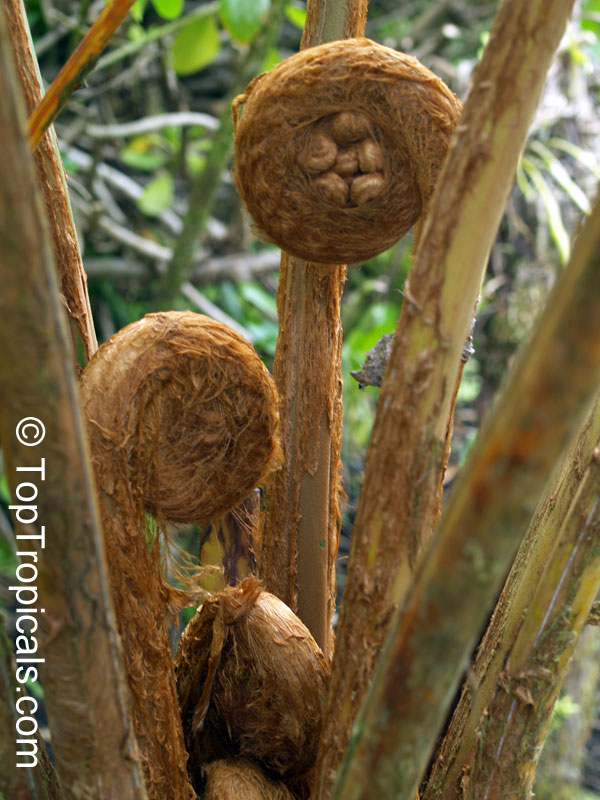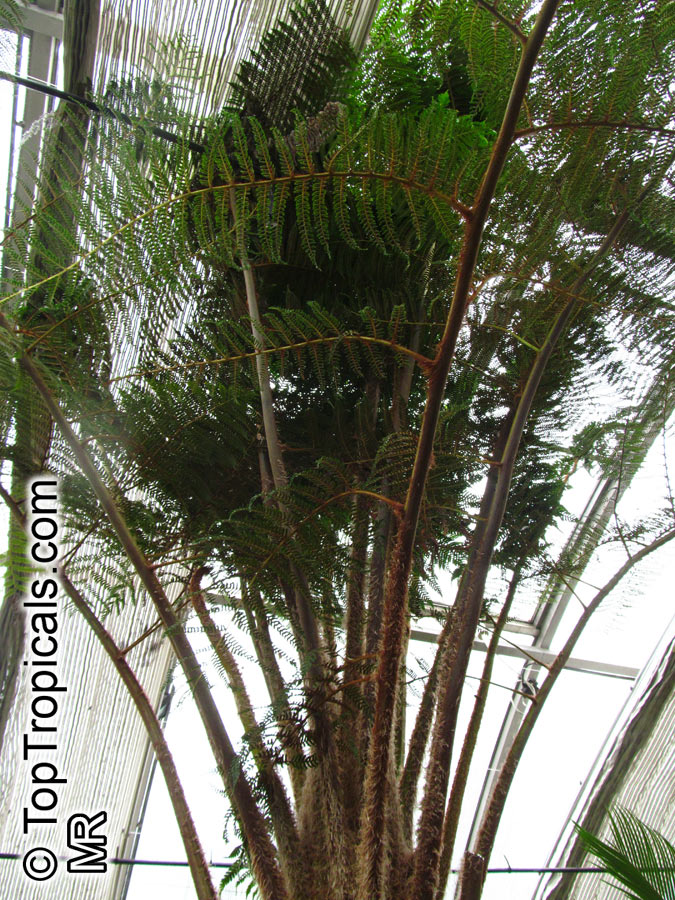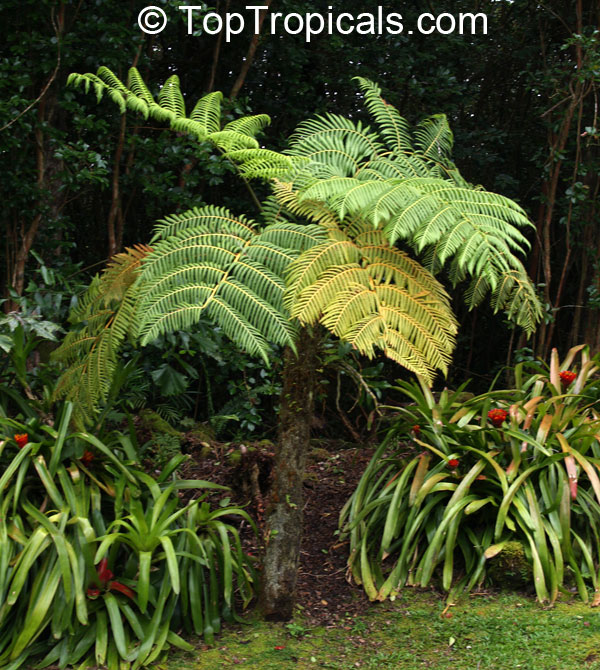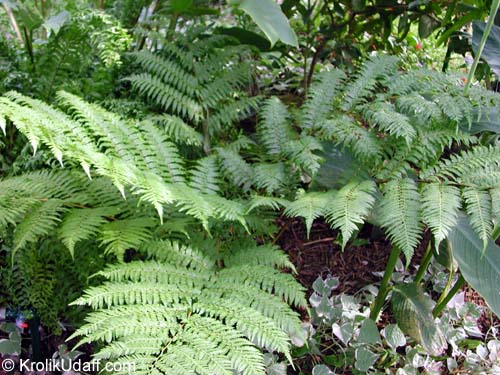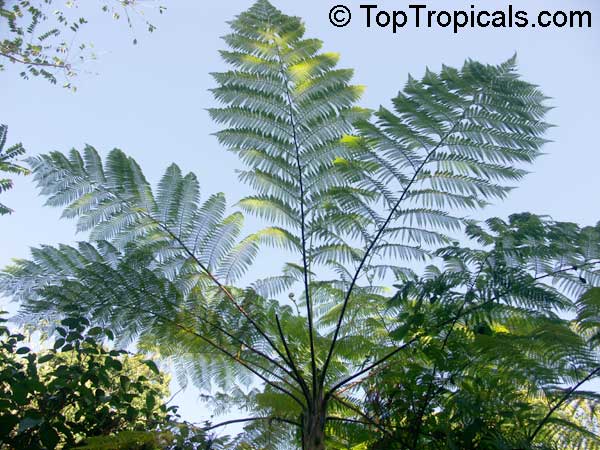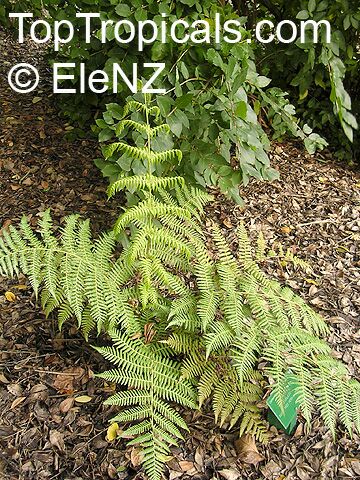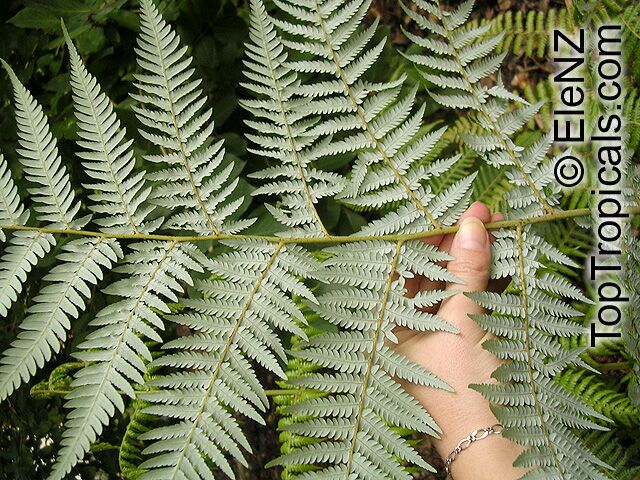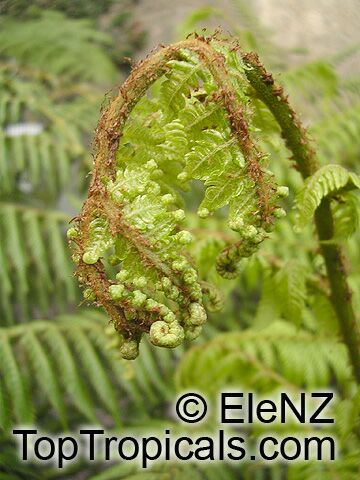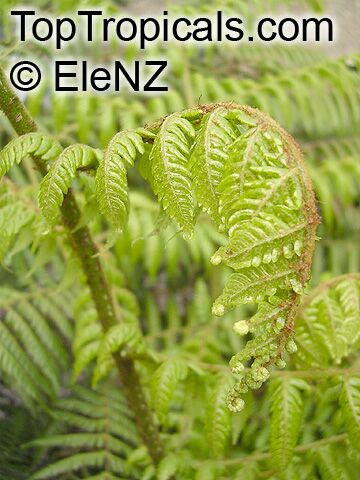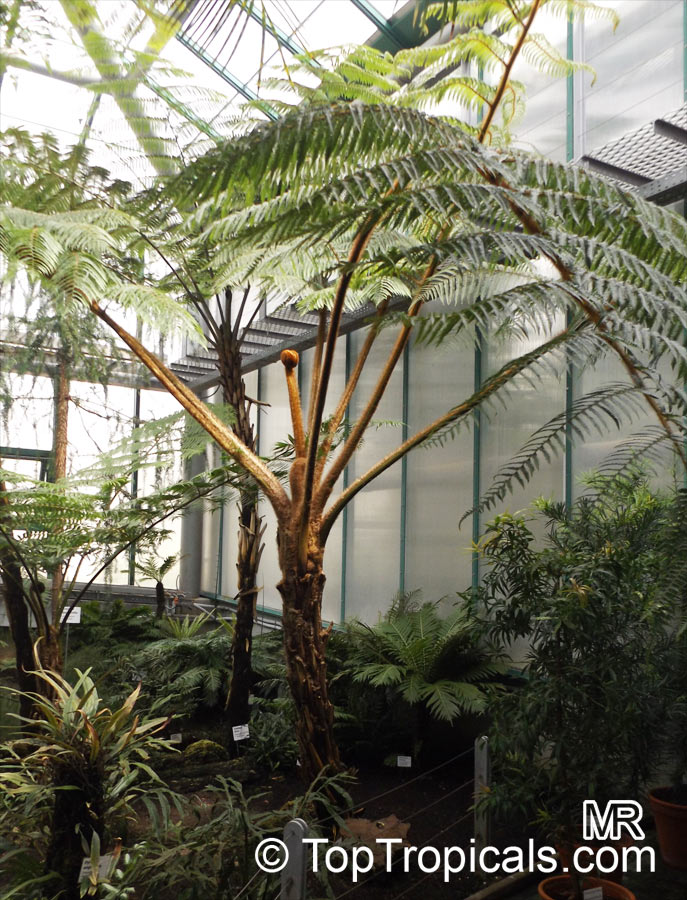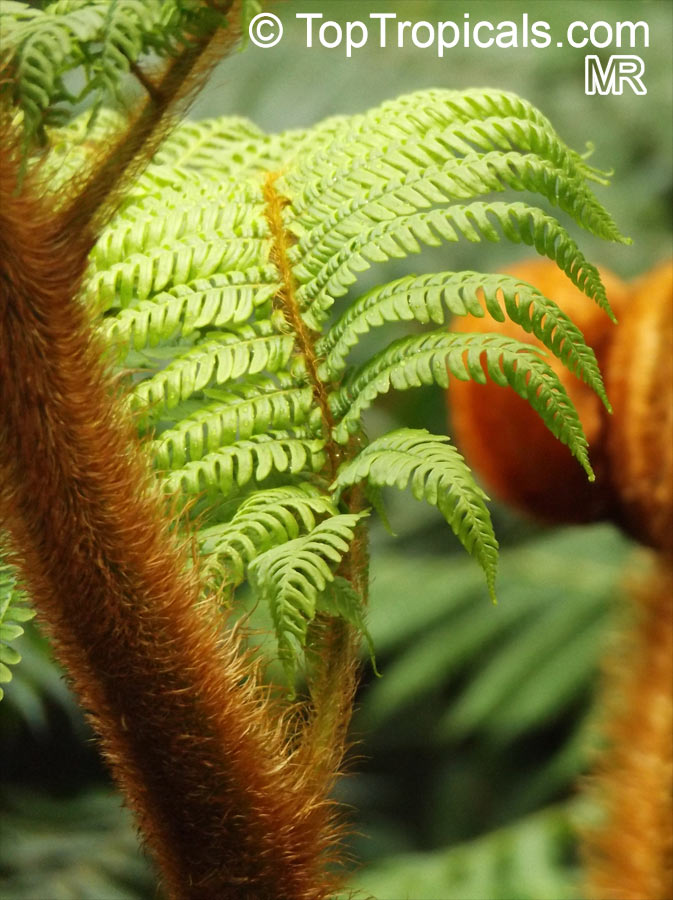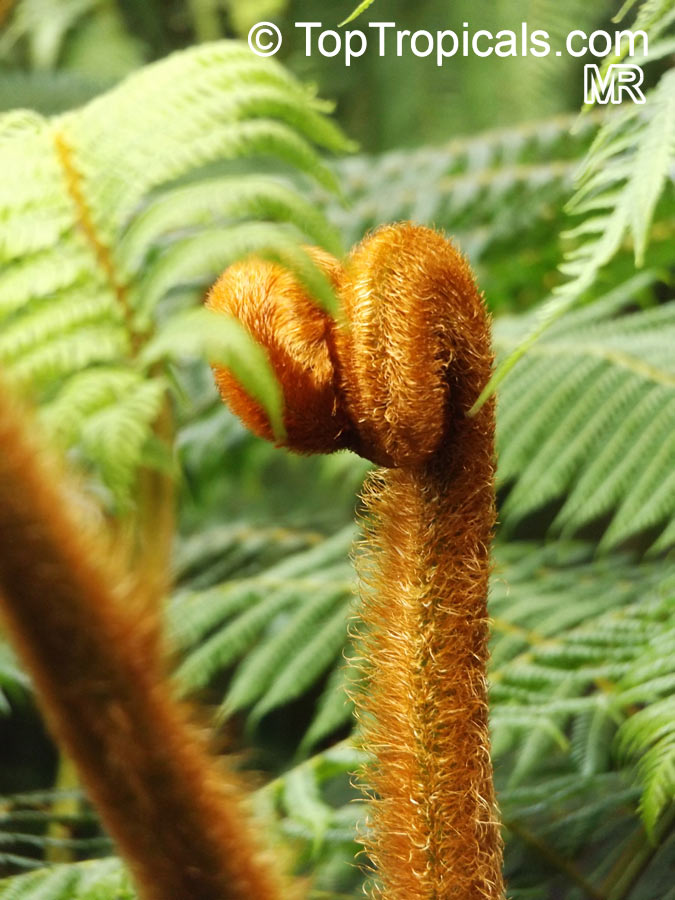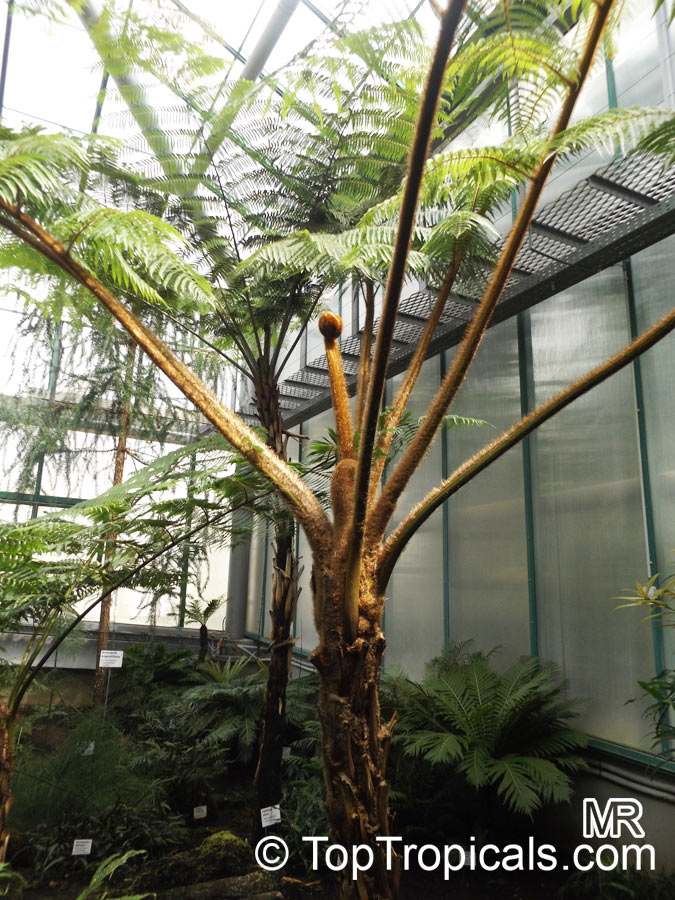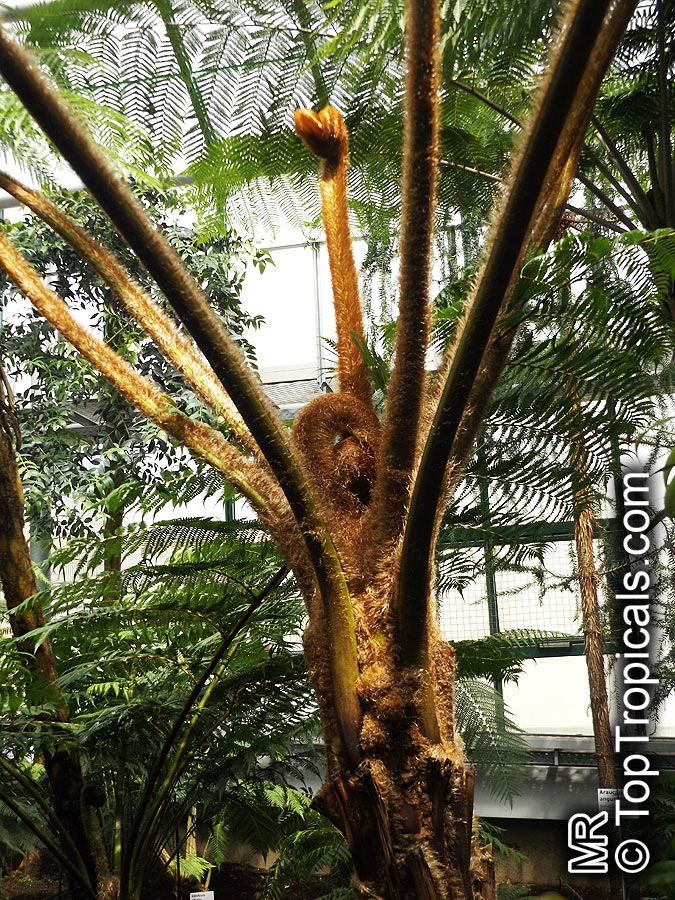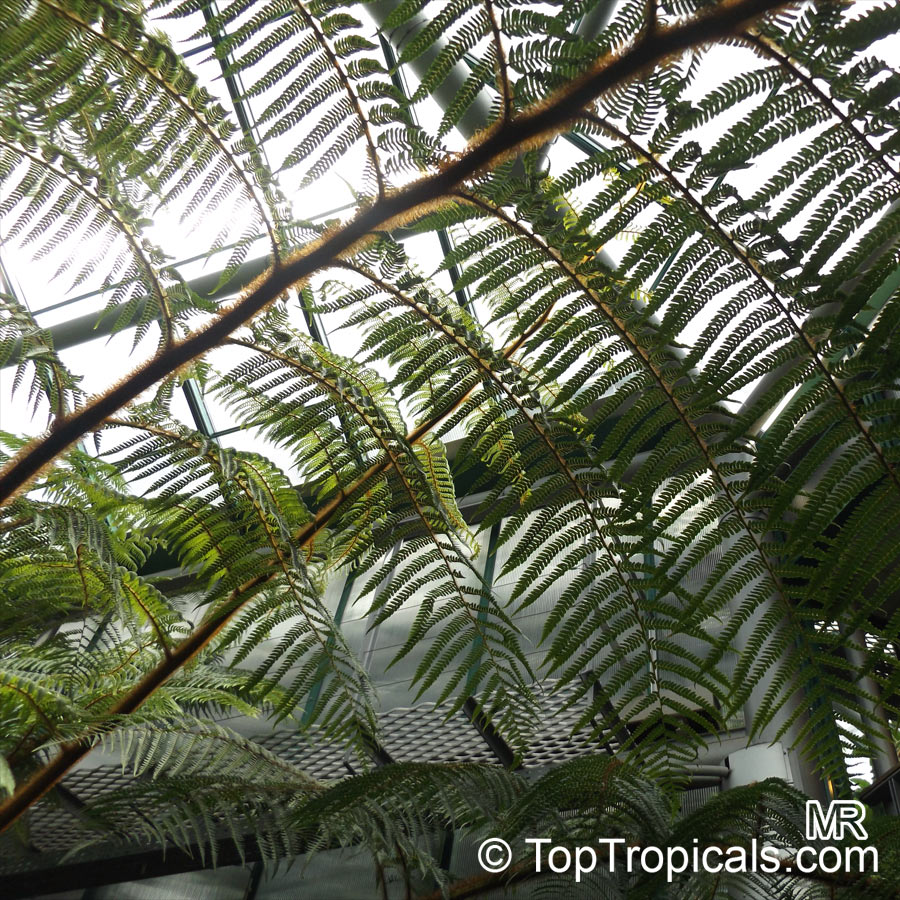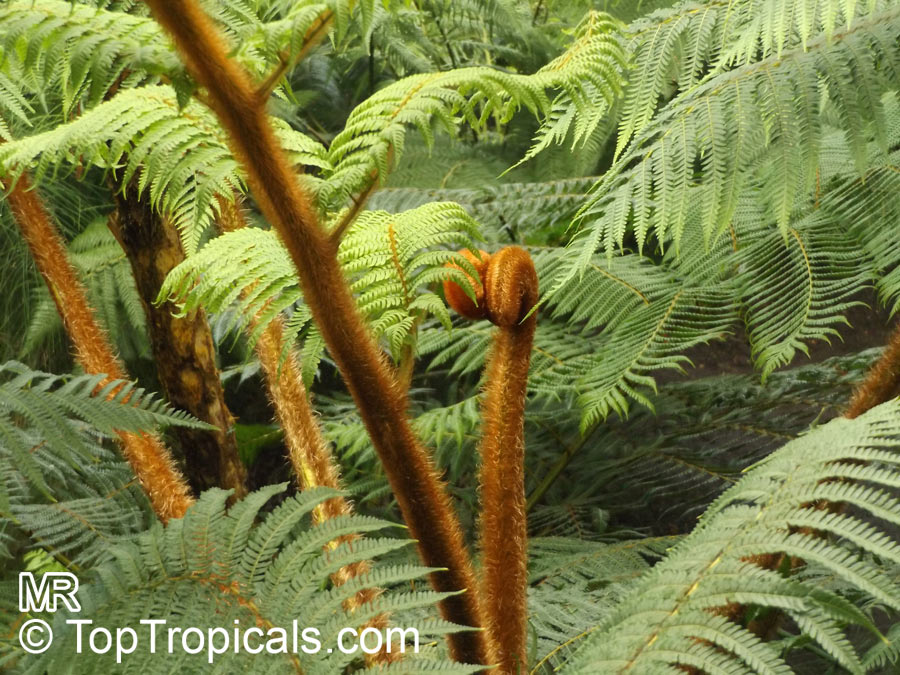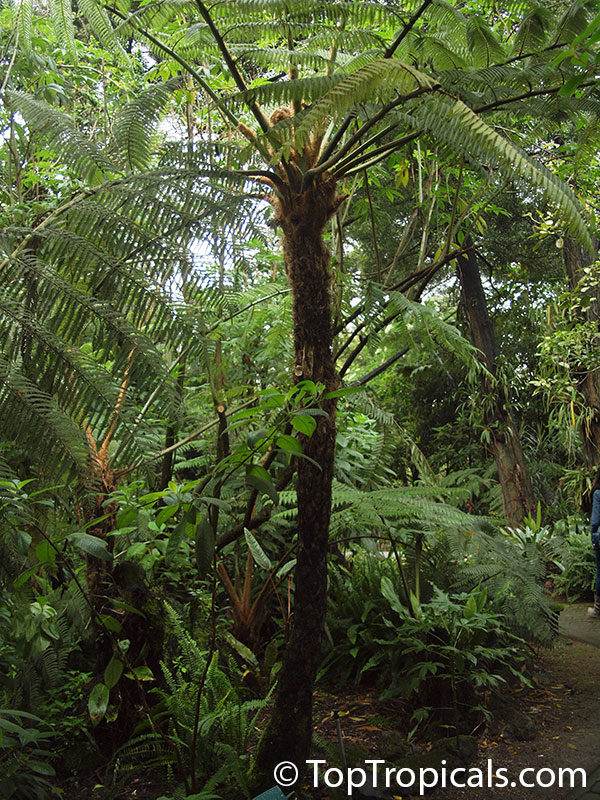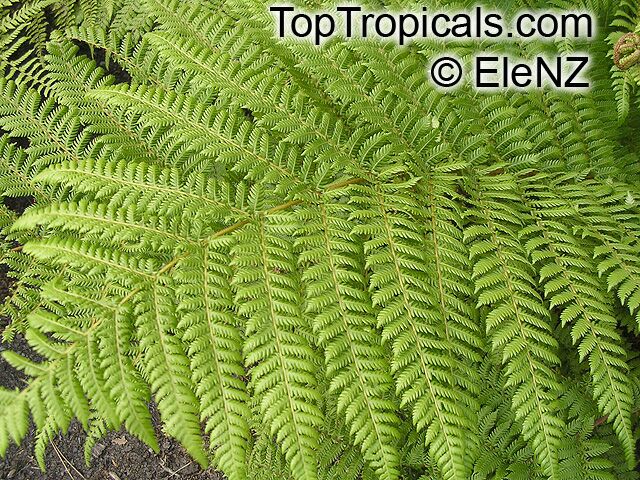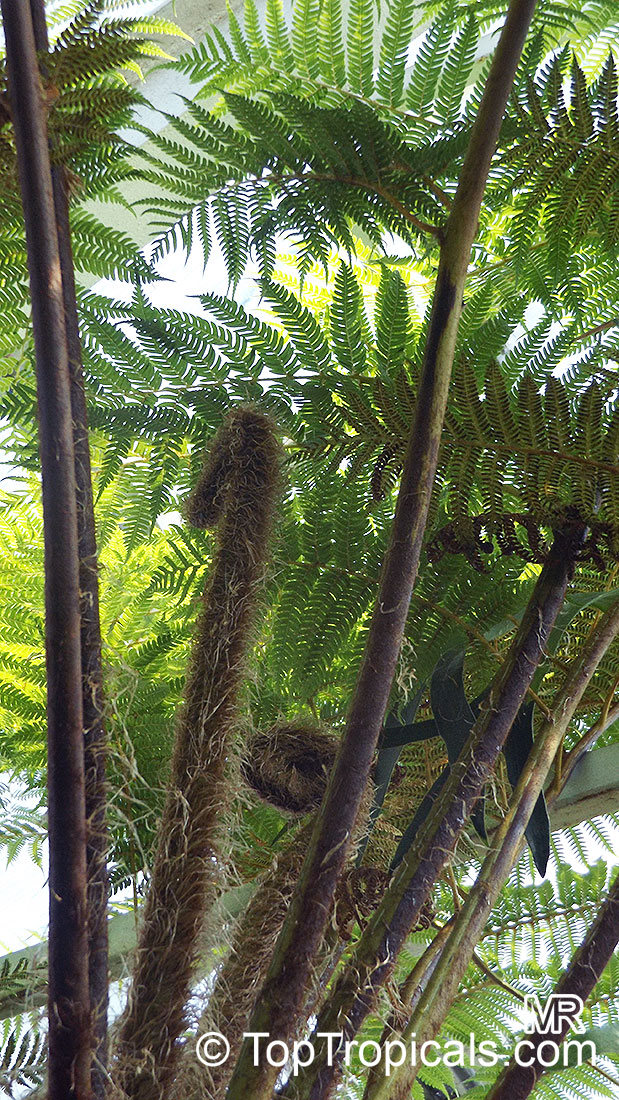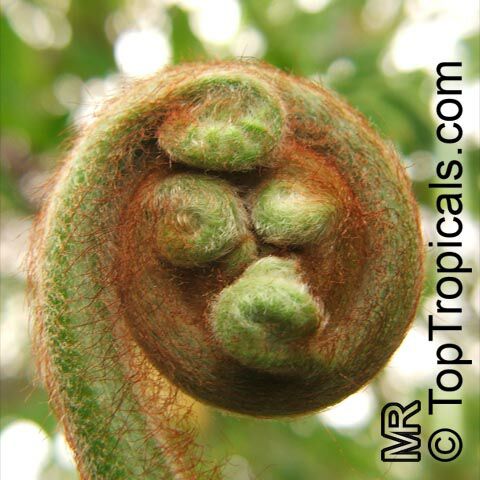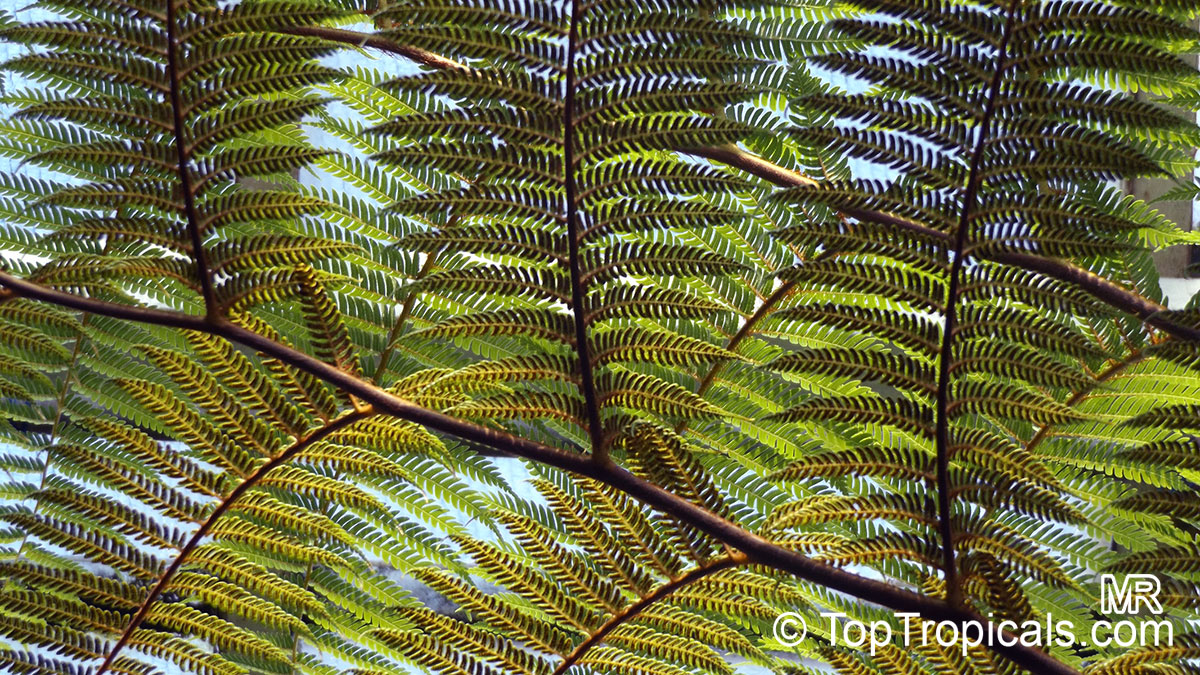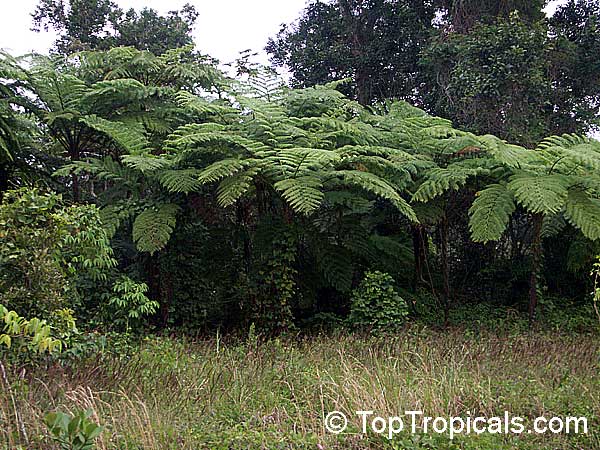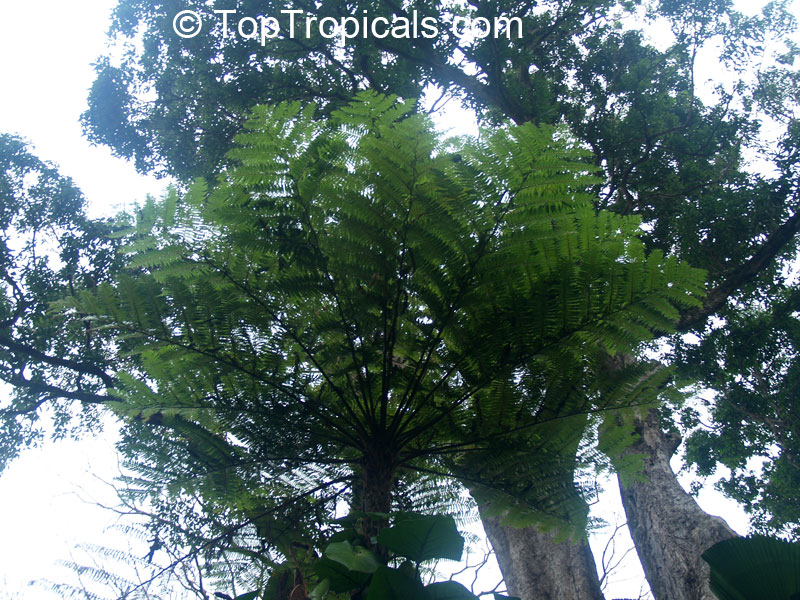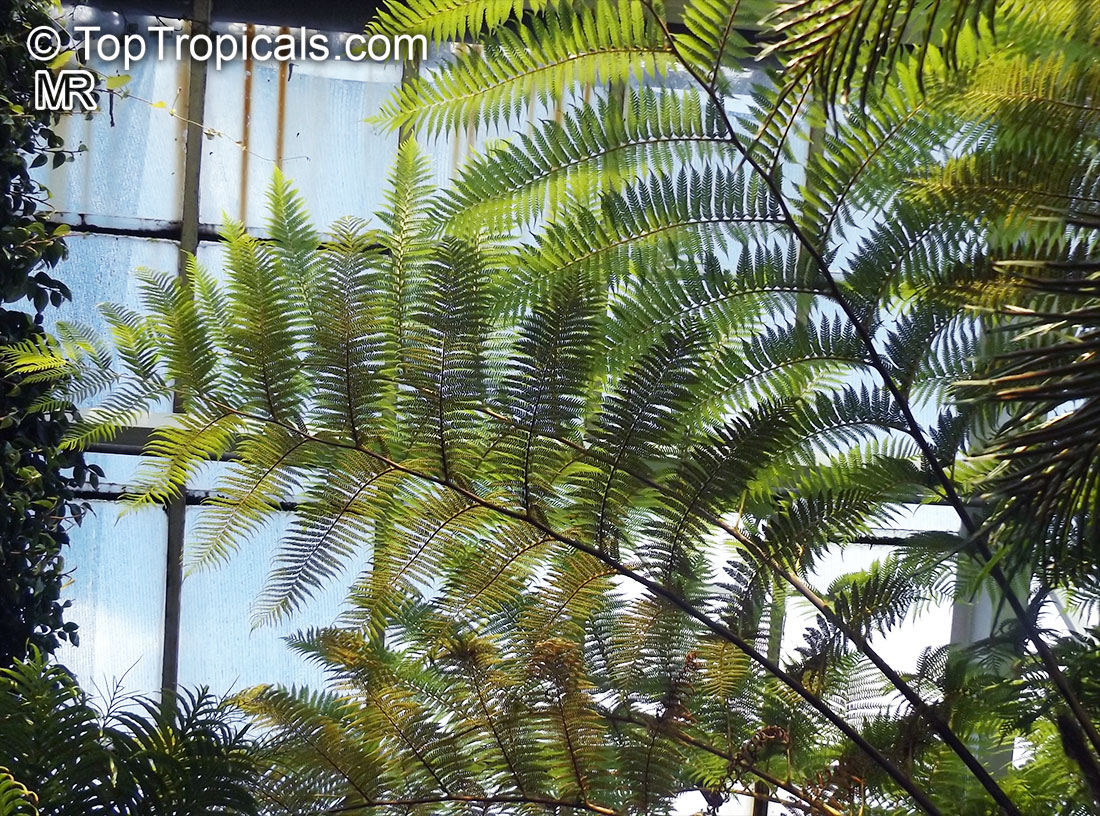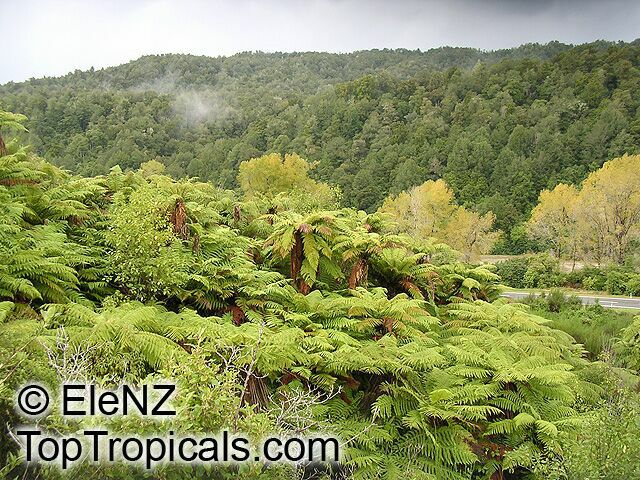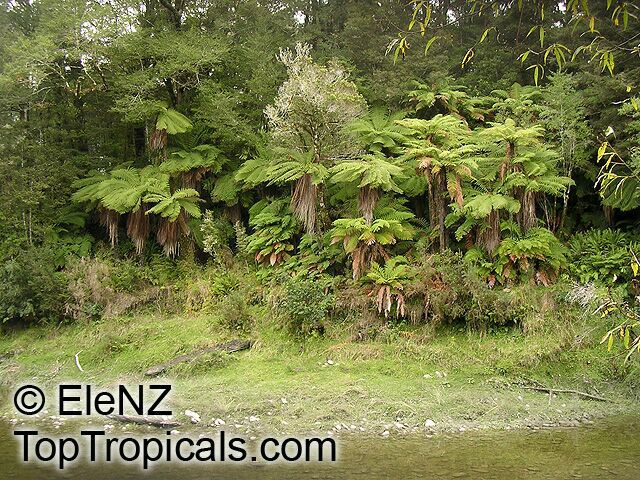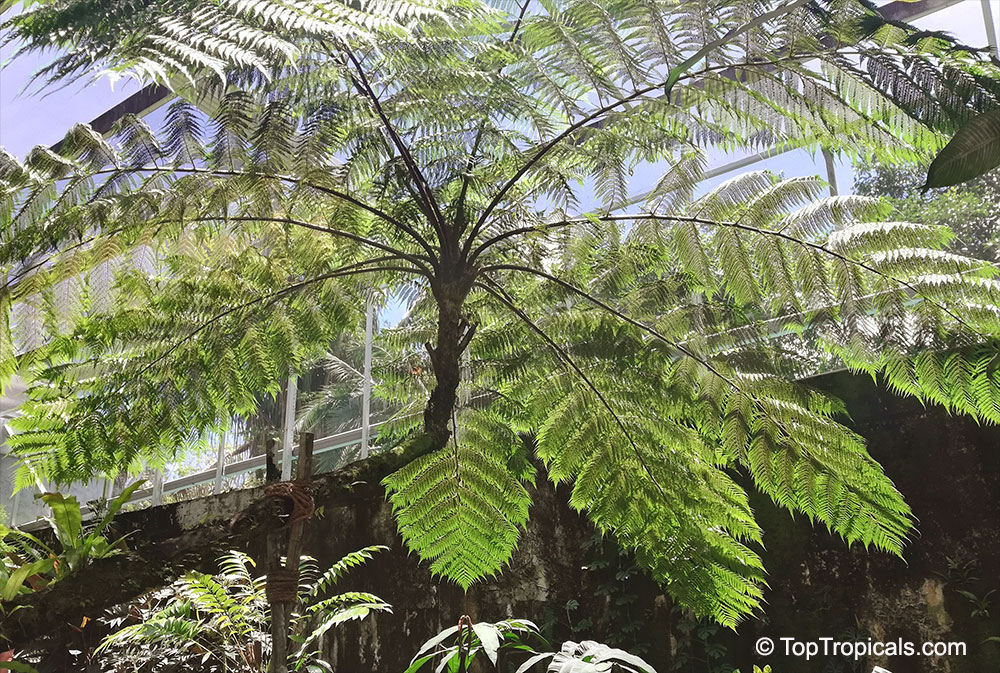Cyatheaceae - Botanical Family
Top Tropicals Plant Encyclopedia
| Number of plants found: 9 |
Botanical names: Cyathea australis, Alsophila australis
Common name: Rough Tree Fern
Family: Cyatheaceae
Origin: Australia







C. australis is commonly known as the Rough Tree Fern due to the presence of adventitious roots, tubercles (knobbly bits) and masses of hair-like scales on its 'trunk'. The 'trunk' like structure on a tree-fern is actually a greatly enlarged rhizome! The horticultural appeal of C. australis is not only due to its beautiful looks but also because it is an extremely hardy species, even capable of tolerating direct sun when the roots are wet. It is also a robust tub plant and is unusual in that it is tolerant of salty winds. C. australis is thus a popular, cold-hardy tree-fern, adaptable to a variety of climates and soils.
Tree-ferns grow best in high humidity and high soil moisture conditions. It is therefore important to use good-quality mulches and to top them up regularly as this will not only keep the soil moist but also provide nutrients to the shallow root system. Tree-ferns usually respond well to organic fertilizers and well-rotted animal manures.
C. australis has a crown of similar size to C. cooperi
but the frond bases are covered in narrow dark brown scales and are quite prickly to the touch.
Botanical name: Cyathea contaminans
Common name: Blue Tree Fern
Family: Cyatheaceae
Origin: Malesia







Blue Tree Fern grow in habitats ranging from tropical rain forests to temperate woodlands.
Young fronds boiled and eaten.
Botanical names: Cyathea cooperi, Sphaeropteris cooperi
Common names: Australian Tree fern, Hapuu Fern
Family: Cyatheaceae
Origin: Australia
Hardiness: 15°F







Growing Cyathea cooperi can be an enjoyable and rewarding experience that adds a unique beauty to one's outdoor space. Adequate moisture is key to the tree fern success, so it should be planted in moist, rich soils with good drainage. It prefers full sun, but some semi-shade is also acceptable. For potted specimens, soil should be renewed yearly, and the potting mix should be kept consistently and slightly moist to prevent the fern from drying out. To ensure the tree fern continued health and growth, it should be fertilized several times a year, but with low nitrogen fertilizers to avoid spurring overly leafy growth.
For those in colder climates, Cyathea cooperi can be kept successfully in a pot and placed in a cool, sheltered corner for the winter. When nighttime temperatures drop below 30°F, the pot should be covered with plastic and a light insulating layer of mulch or hay. During the winter, water should be kept to a minimum, and then increased slightly as spring approaches and temperatures begin to rise. As long as the tree is not exposed to severe cold for an extended period of time, it should survive and thrive, making it a beautiful addition to any outdoor space.
Read more:
Read more:
Australian Tree Fern - a botanical marvel
Recommended Fertilizer: SUNSHINE Robusta - Rapid Growth Booster
Botanical names: Cyathea dealbata, Alsophila tricolor
Common names: Silver Tree Fern, Ponga
Family: Cyatheaceae
Origin: New Zealand





Cyathea dealbata, or the Silver Tree Fern, is a small tree native to New Zealand, typically growing to 10-20 ft in height. It is the country's national symbol and makes a majestic addition to any garden. It requires full sun or semi-shade, and regular watering to maintain its ornamental foliage. The fronds are typically 10 ft meters long, with lush and silver colored undersides.
If growing in cold regions, the fern should preferably be grown in a pot and brought indoors during the winter. In USDA zones 8-11, the tree fern can thrive outdoors year-round, with regular watering and protection from snow or frost. When planting, prepare a hole that is big enough to hold the root ball. The tree should be planted at the same level as it was in its pot, and the soil should be kept evenly moist until the tree is established.
To boost growth, fertilize the fern with a balanced fertilizer every three months during the growing season. Pruning is not usually required for proper growth, but if you want to shape the fern, the shoots that appear from the crown should be cut off. When it's time to prune the fronds, only the oldest and most damaged should be removed to avoid stress on the tree.
The Silver Tree Fern is a beautiful addition to any garden, requiring little maintenance and providing a unique and beautiful look. With proper care and protection from cold climates, you can enjoy its lush and vibrant foliage for many years to come.
Botanical name: Cyathea medullaris
Common names: Mamaku, Black Tree Fern
Family: Cyatheaceae
Origin: New Zealand, Fiji, Polynesia







In New Zealand it is possibly the most common tree fern, and it is found growing in a large range of microclimates and situations throughout the island. It is a rapid grower and makes a very imposing specimen even in less than perfect conditions. Unlike C. dealbata and C. smithii, it generally found growing in open places with full exposure to wind and sun. Its large size and black shiny leaf bases make it a most spectacular plant in cultivation. The ideal situation for it is where its fronds get full sun, but the trunk can remain moist.
Botanical names: Cyathea princeps, Cyathea bourgaei, Sphaeropteris horrida
Common names: Tree Fern, Palma de Montana
Family: Cyatheaceae
Origin: Central America, Mexico








Botanical names: Cyathea quindiuensis, Sphaeropteris quindiuensis
Common name: Helecho Arboreo
Family: Cyatheaceae
Origin: Central America






Botanical name: Cyathea smithii
Common names: Soft Tree Fern, Golden Tree Fern, Katote
Family: Cyatheaceae
Origin: New Zealand






This small tree, which can reach between 10 and 20 feet in height, enjoys full sun, semi-shade or shade, and requires regular watering. It can be grown in the USDA hardiness zone 9-11, and makes an excellent addition to any garden that is seeking some ornamental foliage appeal.
Cyathea smithii will grow readily when planted in a pot in cold regions as well. Here, they will not only require regular water, but may need to be brought in during extreme cold spells in order to protect the delicate fronds and scale covered trunk. The pot should be large enough to house the shrub's generous root system, as it requires greater soil depths and creates extensive canopy that gives rise to its lacy fronds. Though it generally thrives in temperate climates, it has proven to be a surprisingly hardy species that can handle periods of drought and extreme temperatures, given adequate care.
For those with adequate space in warmer climates, the evergreen Cyathea smithii provides excellent beauty and can be a striking addition to any outdoor environment. If given the right conditions, and enough space to grow and spread, this small tree will not just boost your garden's ornamental appeal. It will become a beloved staple of your outdoor environment.
Botanical name: Cyathea sp.
Common name: Tree Fern
Family: Cyatheaceae
Origin: Australia, New Zealand
Hardiness: 30°F







Tree-ferns are the largest of the ferns and can provide a spectacular addition to most gardens. They grow in habitats ranging from tropical rain forests to temperate woodlands.
Use link to repeat this search:
https://toptropicals.com/cgi-bin/garden_catalog/cat.cgi?search_op=and&keyword_op=and&language=e&family=Cyatheaceae&number=10
&no_change_lang=1&user=tt&sale=1&first=0
